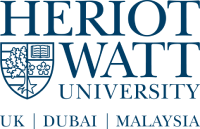Prof A Kemp, Prof M Dunn, Prof D Reid
Applications accepted all year round
About the Project
Glioblastoma multiforme (GBM) is an aggressive malignant brain tumour with a median survival for adults of only 11 – 15 months. Published studies have shown that prognosis can be improved if near-complete removal of the tumour can be achieved in surgery [do we need to put references?]. To aid resection, fluorescence guidance is used, utilising blue light excitation of a red fluorescing photosensitiser to highlight diseased cells. There is a need to better understand the light-tissue interactions during fluorescence guided resection, investigating the depth in tissue information present in the returned image and whether photodynamic therapy can be successfully performed with the existing photosensitiser. Building upon the knowledge accumulated over 13 years of collaboration on light interaction with skin, Monte Carlo Radiative Transfer will be used to investigate these clinical challenges in the brain and to continue our research on the impact of light on skin for both therapy and public health.
Candidate Information
The PhD student will spilt their time between St Andrews and Ninewells in Dundee. Supervisors will be Dr Kenneth Wood and Professor Tom Brown.
Essential Criteria:
Minimum upper second class honours degree in physics
Desirable Criteria:
Computing experience with programming languages such as Fortran, C++, Python Research laboratory experience with lasers
Company Information:
With over a decade of interdisciplinary research between St Andrews and Ninewells, PhD students join a very active group combing research strengths in clinical diagnosis and treatment of skin and brain cancers, experimental laser physics, and theoretical modelling of phototherapies. This approach involving computer simulations, laboratory experiments, and clinical work allows students to gain experience in a wide range of areas and move towards what best fits their individual research skills and interests. Students split their time between St Andrews and Ninewells in Dundee, become integrated into the research groups at both institutions and benefit from the regular group meetings and discussing and presenting their work at research seminars.
Flexible Research Working:
The nature of the split-site between St Andrews and Dundee means that we are very happy to discuss flexibility in their research work.
This academic supervisor for the project is based at the University of St Andrews.The successful applicant will be a full-time registered student of the University of St Andrews as well as a non-graduating student of Heriot-Watt University.
Funding Notes
The annual stipend is £16,277.
Travel funding for conference presentations is also available.
References
References:
Brown T, Brennan MC, Li M, Church EW, Brandmeir NJ, Rakszawski KL, Patel AS, Rizk EB, Suki D, Sawaya R & Glantz M. Association of the Extent of Resection With Survival in Glioblastoma: A Systematic Review and Meta-analysis. JAMA Oncol.2016 Nov 1;2(11):1460-1469. Stummer W, Pichlmeier U, Meinel T, Wiestler OD, Zanella F, Reulen HJ; ALA-Glioma Study Group. Fluorescence-guided surgery with 5-aminolevulinic acid for resection of malignant glioma: a randomised controlled multicentre phase III trial. Lancet Oncol. 2006 May;7(5):392-401.

 Continue with Facebook
Continue with Facebook

